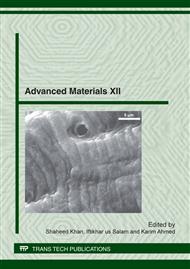p.293
p.301
p.307
p.315
p.321
p.330
p.335
p.343
p.348
Influence of Contact Materials on Phenomena in a Short Electrical Arc
Abstract:
Investigation of transition phenomena accompanying the evolution of metallic phase of electric arc into gaseous phase is very important for the further progress in such fields as plasma technologies, electrical apparatus, plasmatrons and other technical applications. Some aspects of this transition are considered in presented paper on the base of mathematical model described dynamics of phenomena in the arc column, near-electrode zones, anode and cathode solids. Cathode and anode phenomena such as ion bombardment, thermionic emission, inverse electron flux, evaporation, radiation, heat conduction etc. are considered in dependence on time, current, opening velocity, parameters of the gas and contact materials. The conditions of the arc transition from one phase to another are formulated in terms of above characteristics and increasing of gas ionization level. Special experiments with two contacts materials, and have been carried to verify the mathematical model. The results of calculation and experimental data enables us to conclude that in metallic arc phase (short arc length), which is characterized by material transfer from the anode to the cathode, the erosion of contacts is considerably small than erosion of contacts both for resistive and inductive circuits, while in gaseous arc phase (long arc length) with opposite material transfer the rate of erosion depends on the inductance. If the inductance, then contacts have smaller erosion in comparison with contacts, however for inductive circuits situation is quite different, thus use of contacts in the case of long arcs burning in gaseous phase is more preferable. It was found also that the addition of niobium diselenide (1%) and tantalum (5%) into silver contact material which are sublimating into arc plasma enables to change ionization potential, that leads to decreasing of the arc temperature, arc duration and contact erosion.
Info:
Periodical:
Pages:
321-329
Citation:
Online since:
May 2012
Authors:
Price:
Сopyright:
© 2012 Trans Tech Publications Ltd. All Rights Reserved
Share:
Citation:


